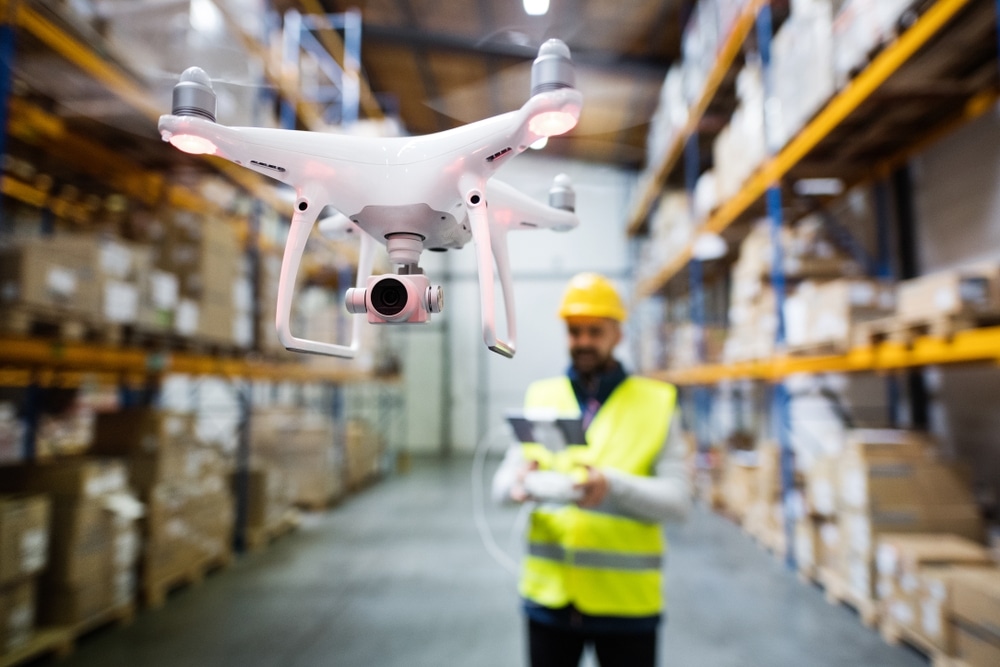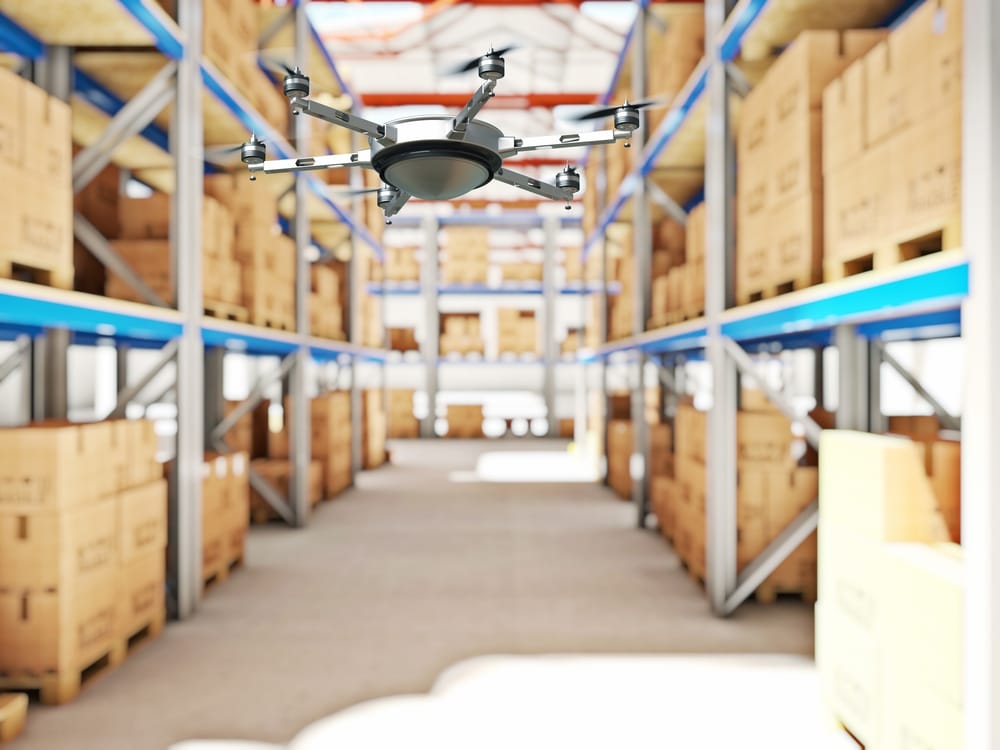Eye in the Sky: Drones and Passive RFID to Manage Assets
Drones sporting RFID readers are taking flight inside large warehouses, distribution centers, fulfillment centers, big box stores, and air cargo facilities, as well as above freight yards. They started out reading active RFID, but now have embraced passive RFID tags for low-cost, high-tech solutions. Their goal? To help solve the persistent problem of misplaced or miscounted inventory.
It’s a $45 billion problem, and it caught the attention of Walmart and Amazon early on. There were some challenges common to any new use of a new technology. Namely, drones were expensive, unstable, and unreliable.
Initially, heavy RFID readers were strapped to drones. That meant large drones were needed to lift the readers, which made crashes potentially hazardous to people on the ground.
Now, in 2020, those early challenges have been overcome. Low-cost drones and RFID-scanning software are reliable, available, and, finally, practical and safe. And, they’ve embraced passive UHF RFID tags, which can be cost-effectively deployed throughout a supply chain.
RFID Innovation in Action
Rfly, a solution developed by the Massachusetts Institute of Technology (MIT) was a huge breakthrough. It uses a small relay that acts as a WiFi-repeater to forward the signal from a remote reader to nearby passive RFID tags and, thus, read them. A small RFID tag on the drone itself lets the system triangulate the drone’s position and determine the exact location of the UHF RFID tags being read. This allows small drones to be used.
That’s not the only option, of course. RFID supplier FEIG Electronics teamed with Congruex to add passive UHF RFID technology to drones for asset management. Some auto manufacturers are using this solution to record the VIN numbers and GPS coordinates of vehicles on their staging lots. Ports and construction sites are using the technology for asset location, too.
RFID stickers, unlike bar codes, don’t require line of sight to be read. That’s why they are so beneficial in the supply chain. They can be embedded inside the contents of a rail car or deep inside a distribution center where they may not be easily accessible. In fact, MIT reports that RFID-reading drones actually are more effective at taking inventory than humans. That’s because they don’t need ladders or lifts to reach high shelves, and they’re faster. They can even navigate complex spaces, and they don’t lose focus. As a result, human errors are eliminated.
RFID solutions typically are used for asset tracking, ensuring that assets are scanned into management systems as they travel from point to point, whether those points are within a warehouse or factory, or along a global supply chain that stretches thousands of miles.
RFID Stickers with Impact Indicators Mean an Eagle Eye for Damage
SpotSee adds impact detection to the mix for even more robust RFID inventory management. Called ShockWatch® RFID, this combination solution indicates when assets have been dropped as well as their point-to-point journey. And, because they can be read by virtually any passive UHF RFID reader, you can easily add impact indicator functionality to existing inventory or warehouse management systems.
Now you can use drones to count, locate, and assess the condition of every item in your warehouse, distribution center, staging yard, or other large space, indoors or outdoors. The only thing you have to do is select the drone and set up that system. SpotSee’s ShockWatch RFID tags are ready to answer the call, out of the box.
An industry outsider might think that once a product is in the warehouse or distribution center it would be safe from potentially damaging impacts. Yet, you know that accidents happen. Automated pickers sometimes fail. Forklifts sometimes clip corners. Large items may be dropped. Small items sometimes fall from conveyor belts. Cars in staging lots get bumped. The list of what can go wrong is long.
That’s why protecting your inventory with the ShockWatch RFID-enabled impact monitor is so important. You can choose from a range of impacts, from 5 Gs to 75 Gs. With that range, you can protect items from virtually any impact it may face.
Knowing about potential damage early matters. First, it helps you prevent damaged items from going into production or reaching your customers. That means your company can spend fewer resources performing warranty repairs and reduce its risk exposure. And, your own reverse logistics operation will have to deal with fewer returns .
It also gives you insights into your own operations. When you can quantify impacts, you can assign accountability and take steps to reduce them. Optimizing your logistics operation may mean retraining your staff or redesigning the warehouse itself to be more efficient.
This all results in improved product quality, and that matters, especially when products reach customers. It enhances your company’s reputation, which helps attract more customers, which provides the funding to do things like upgrade your inventory management system and – not to overstress this – pay your salary. All in all, RFID impact monitoring can help you make a noticeable improvement in your supply chain operations.
Combine one innovation with another — RFID-reading drones with impact-indicating RFID tags — and suddenly you’re operating the warehouse of the future.
Upgrading your existing RFID inventory management system with technology like drones and impact indicators is easier than you think. Want to learn more? Get in touch via the form below to schedule an RFID supply chain consultation.










